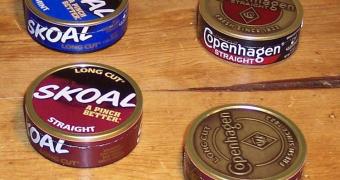Cancer researchers at the University of Minnesota, led by expert Silvia Balbo, say that they have discovered the presence of a cancer-inducing (carcinogen) chemical in smokeless tobacco products.
The substance significantly increases users' risk of developing several forms of oral cancer in time. The risk is augmented the more people use these products. Smokeless tobacco is most often sold as dipping, chewing tobacco, snuff, gum, paste and tobacco water.
All of these products contain elevated amounts of the chemical (S)-N'-nitrosonornicotine, or (S)-NNN for short. The new investigation is the first to link a specific chemical in smokeless tobacco products to the development of oral cancers.
The fact that these products can promote cancer has been known for a long time, but thus far scientists failed to uncover clear links between any one chemical or substance and this array of conditions. (S)-NNN is known to be a strong inducer of oral cancers, University of Minnesota researchers explain.
This “is the only chemical in smokeless tobacco known to cause oral cancer,” Balbo says in a statement. This discovery finally reveals how these products lead to the development of hard-to-treat cancers.
According to directives promoted by the US Food and Drug Administration, smokeless tobacco products sold in North America need to carry labels saying that users expose themselves to a higher risk of developing mouth cancers, and also that this form of tobacco consumption is not safer than using cigarettes.
“Measures should be taken to reduce this chemical in smokeless tobacco,” Balbo explains. In a series of studies conducted on rats, the unsuspecting rodents were exposed to (S)-NNN. Within 17 months, all 24 of them had died from esophageal and oral tumors, LiveScience reports.
The amount of (S)-NNN the lab animals were exposed to was the equivalent of what an average chronic user would be exposed to on a regular basis. Rats in the study group were given the chemical, whereas those in the control group were only given tap water.
Balbo and her group plan to continue their investigations, in hopes of determining whether any other chemicals in smokeless tobacco products increase users' risk of developing cancer.

 14 DAY TRIAL //
14 DAY TRIAL //